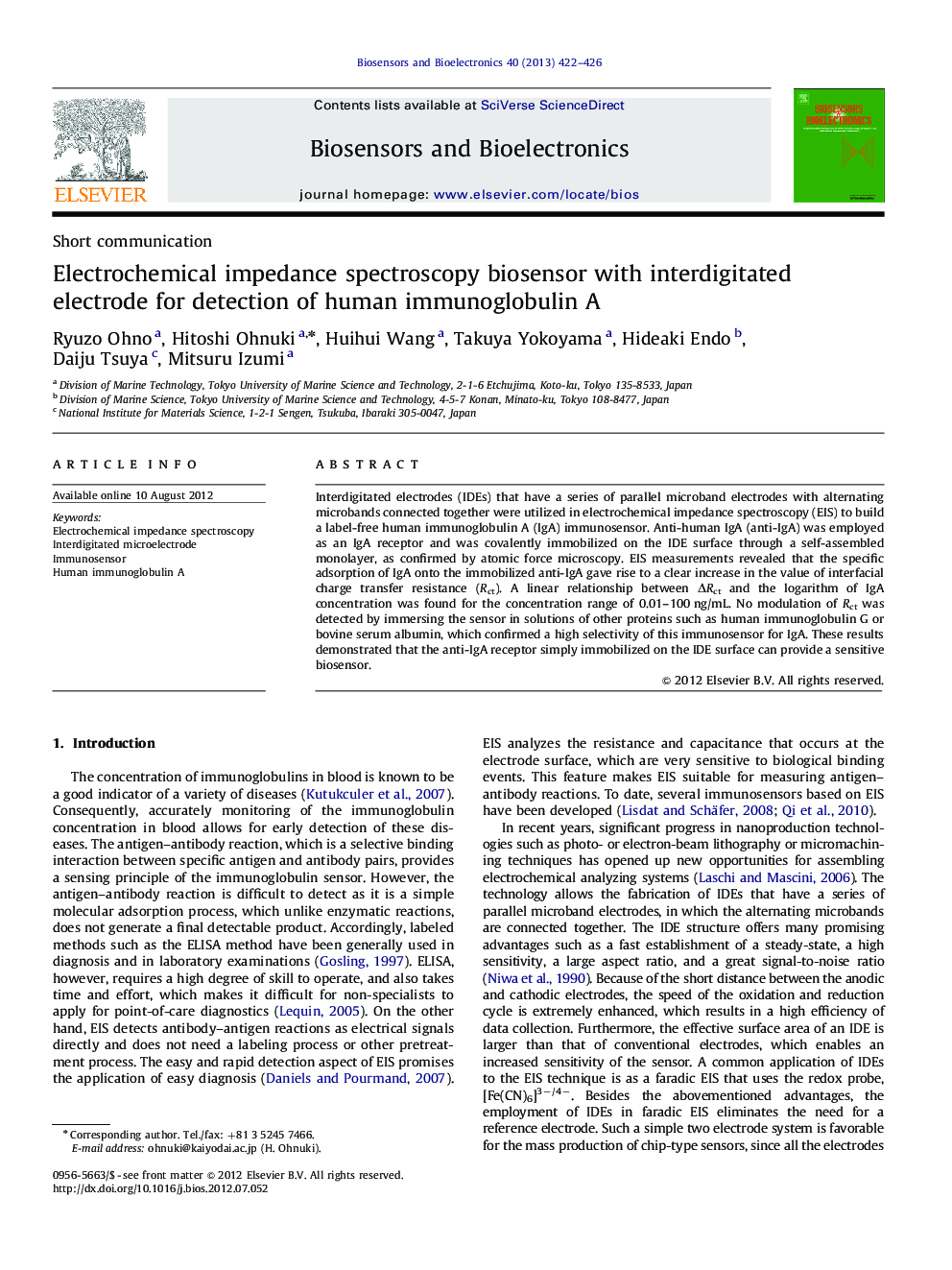| Article ID | Journal | Published Year | Pages | File Type |
|---|---|---|---|---|
| 7234811 | Biosensors and Bioelectronics | 2013 | 5 Pages |
Abstract
Interdigitated electrodes (IDEs) that have a series of parallel microband electrodes with alternating microbands connected together were utilized in electrochemical impedance spectroscopy (EIS) to build a label-free human immunoglobulin A (IgA) immunosensor. Anti-human IgA (anti-IgA) was employed as an IgA receptor and was covalently immobilized on the IDE surface through a self-assembled monolayer, as confirmed by atomic force microscopy. EIS measurements revealed that the specific adsorption of IgA onto the immobilized anti-IgA gave rise to a clear increase in the value of interfacial charge transfer resistance (Rct). A linear relationship between ÎRct and the logarithm of IgA concentration was found for the concentration range of 0.01-100Â ng/mL. No modulation of Rct was detected by immersing the sensor in solutions of other proteins such as human immunoglobulin G or bovine serum albumin, which confirmed a high selectivity of this immunosensor for IgA. These results demonstrated that the anti-IgA receptor simply immobilized on the IDE surface can provide a sensitive biosensor.
Related Topics
Physical Sciences and Engineering
Chemistry
Analytical Chemistry
Authors
Ryuzo Ohno, Hitoshi Ohnuki, Huihui Wang, Takuya Yokoyama, Hideaki Endo, Daiju Tsuya, Mitsuru Izumi,
